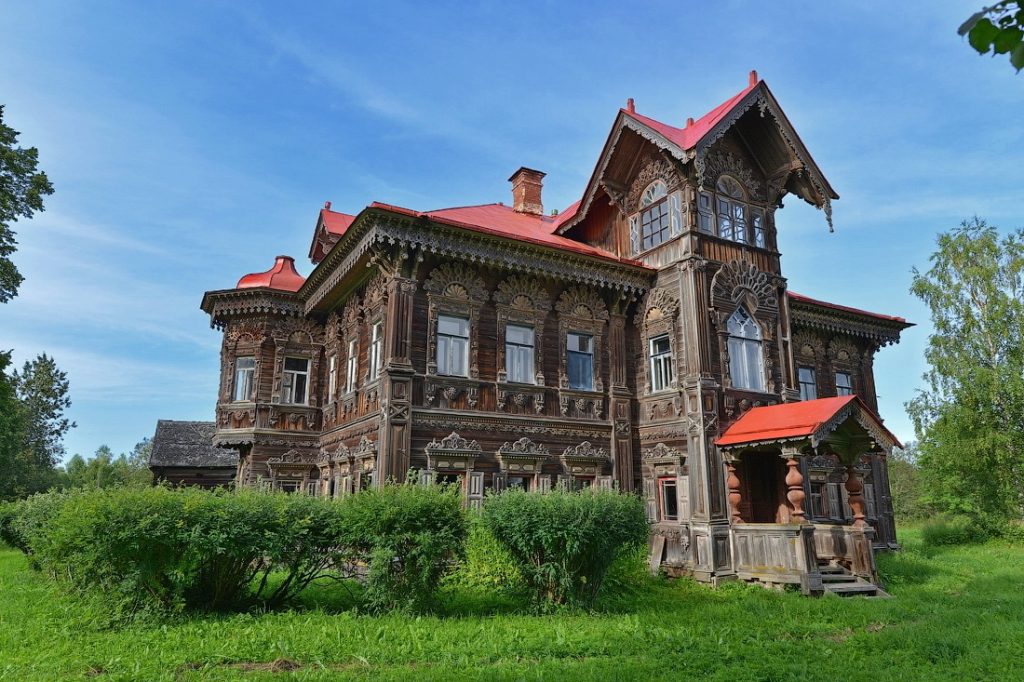The wooden home of Polyashov in Pogorelovo village
This lovely two-story home is a remarkable example of timber architecture and is situated in the deserted town of Pogorelovo in the Kostroma region, about 540 kilometers from Moscow.
The home was constructed in 1902–1903, more than a century ago, and has never undergone repair, preserving its authentic interior design and furnishings. Deni. Spiri took the pictures.
#1
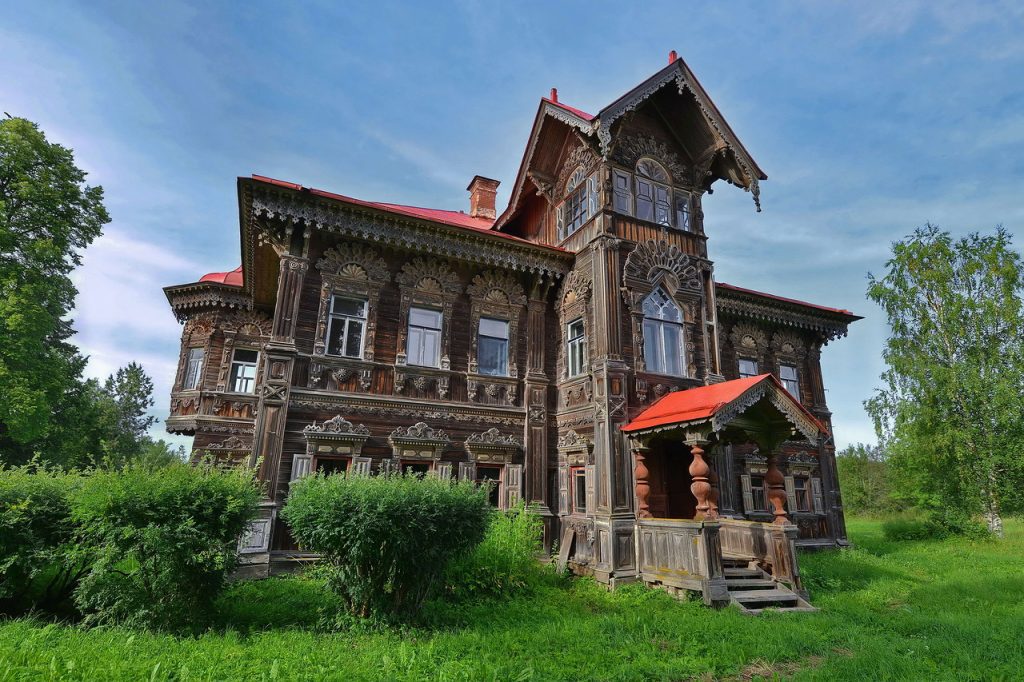
Polyashov Ivan Ivanovich, a peasant who participated in the creation of minor architectural forms and country cottages in St. Petersburg and the surrounding area, was the one who created this stunning structure.
#2
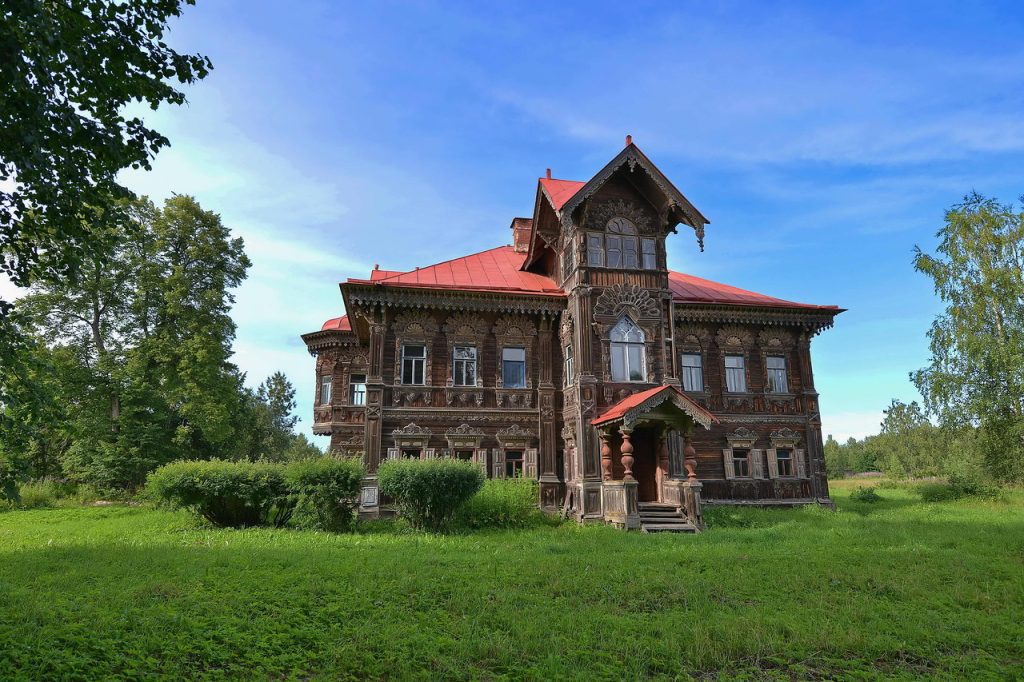
Two amazing wooden homes may be found in a small region close to the town of Chukhloma in the Kostroma Region, tucked away amid the grandeur of Russia’s forests. The Terem Mansion in Astashova and the old town of Pogorelovo near the Viga River are two examples.
Ivan Poliashov, who, like Sazonov, built the Terem in Astashovo, having grown rich as a contractor during the St. Petersburg construction boom, constructed the extraordinary palace at Pogorelovo at the turn of the 20th century (perhaps in 1902). Like Sazonov, Poliashov lavishly exhibited his wealth in the design of a large wooden home in his place of origin.
The Poliashov house, an enormous log structure with plank siding, has fortunately largely weathered the effects of time on both the exterior and much of the interior. This pleasant outcome is attributable in part to the unique story of an artist who lives to preserve the house even if the hamlet that formerly surrounding it has vanished, as well as distinctions in architecture.
Ivan Poliashov, the son of a peasant named Ivan Dmitrev, was most likely born in 1850. He went by the name Ivan Ivanov but used Poliashov for work in St. Petersburg. He wed Evdokia Egorova in 1868, and the two of them had two sons and two daughters. While his building business prospered in St. Petersburg, he also built up businesses in Pogorelovo, including a successful water mill and logging activities.
After the passing of Poliashov’s first wife towards the close of the 19th century, he married Maria Suvorova, a 26-year-old priest’s daughter from the village of Vvedenskoe, in April 1904. Three sons and three girls were born from the second marriage.
Poliashov’s property was expropriated by the Soviet government once it came to power, but he continued to reside there in one of the rooms and even managed the sawmill he built. He passed away in 1935 and was interred in the Dorok Church of St. Nicholas cemetery.
#3
primitive luxury
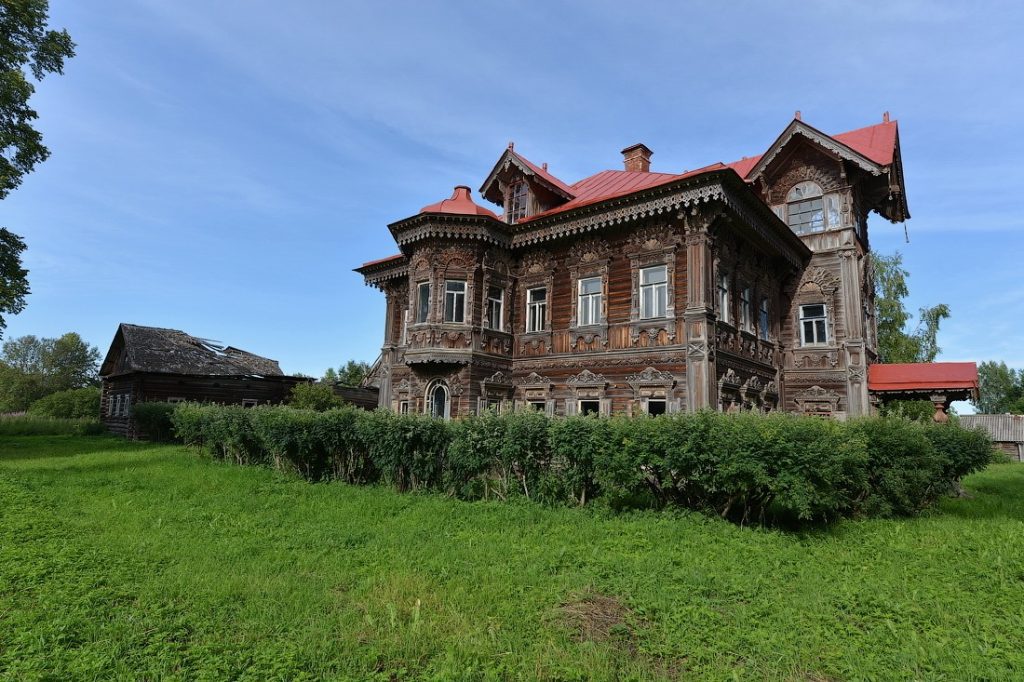
Although the Poliashov house has a more rural façade than the Terem at Astashovo, it nonetheless exhibits the influence of urban design in small elements like the window surrounding baroque flourishes. A Carpenter Gothic tower in the middle of the south façade, which got the lightest, boldly declares that it is the main entry. (The Astashovo Terem’s tower fulfilled a more fantastical function as an observation platform called a belvedere.)
The intricately carved semicircular embellishments above the second-story windows of the Poliashov home, which function classically as a bel stage, or level enclosing the primary living space, are particularly noteworthy. These decorative window pediments, which mimic sunbursts, a woman’s celebratory headgear (kokoshnik), or even a display of peacock feathers, declare the wealth of the home’s owner and builder.
An elaborately decorated cornice forms the top of the second level. A half-story that serves as a belvedere is the building’s crowning feature. The structure’s flexibility is highlighted by the projecting bays, verandas, dormers, and loggia.
#4
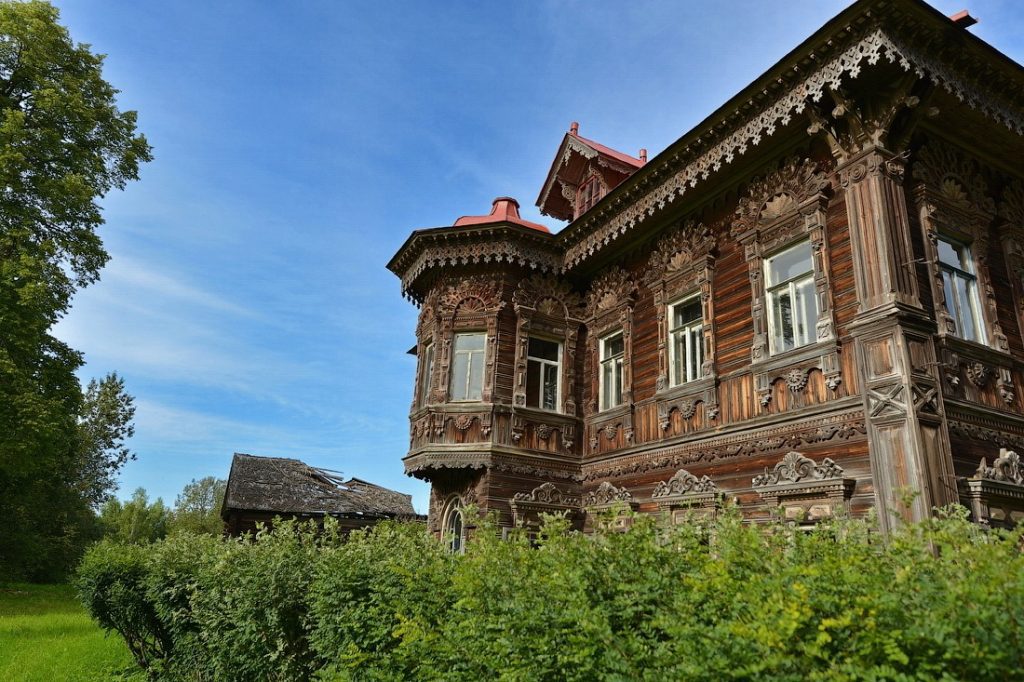
Neoclassical in the outside symmetry and structural balance, and modern in the interior with its arrangement of rooms around a central stairway, the Poliashov house’s plan combines neoclassical and modern notions of the arrangement of internal space. The home also has a sizable area that is comparable to the attached povet (storage area) of a sizable northern izba, or log house.
On the upper landing of the main staircase, which is still present inside the home, are rooms that are impressively designed in an urbane style. Hugely ornate wood carvings and the exact geometry of ceiling caissons alternate with elegant wall paintings with floral and arabesque motifs.
In the dining room, kitchen, large pantry, and what looks to be a breakfast alcove on the ground floor, fragments of patterned wall paintings and stencil designs are also still visible. (During the long winters, it might be easier to heat the lower floor.)
#5
Saving grace for Pogorelovo

Maintenance, especially of the roof, is necessary to keep much of the interior decoration from succumbing to quick degradation and collapse brought on by moisture seepage. As villages were left behind in the population shift to cities in the post-war period, many country homes were lost to such neglect. The Poliashov home might have faced this end, but someone who has been instrumental in keeping the building standing was drawn to it by its unusual beauty.
When he first saw the house in 1971, Anatoly Zhigalev, a member of the Moscow non-conformist art movement, was so moved by it that he made the decision to live there in 1972. Zhigalev has been in the home for many years (winter months excluded), and with little help, he has been able to preserve one of Russia’s most impressive wooden monuments, a worthy companion to the Terem at Astashovo.
It is important to note that this treasure is hidden away in a Chukhloma woodland clearing. The Pogorelovo mansion, which is located beyond the little Viga River and some distance from the closest dirt road, is not easily accessible. The greatest alternative, aside from hiking, is to utilize an ATV (all-terrain vehicle, or quad). Hip boots are necessary for navigating muddy terrain and crossing the Viga on the hard journey. However, the prize is a fantastical vision that can only be found in the Russian wilderness.
#6

#7
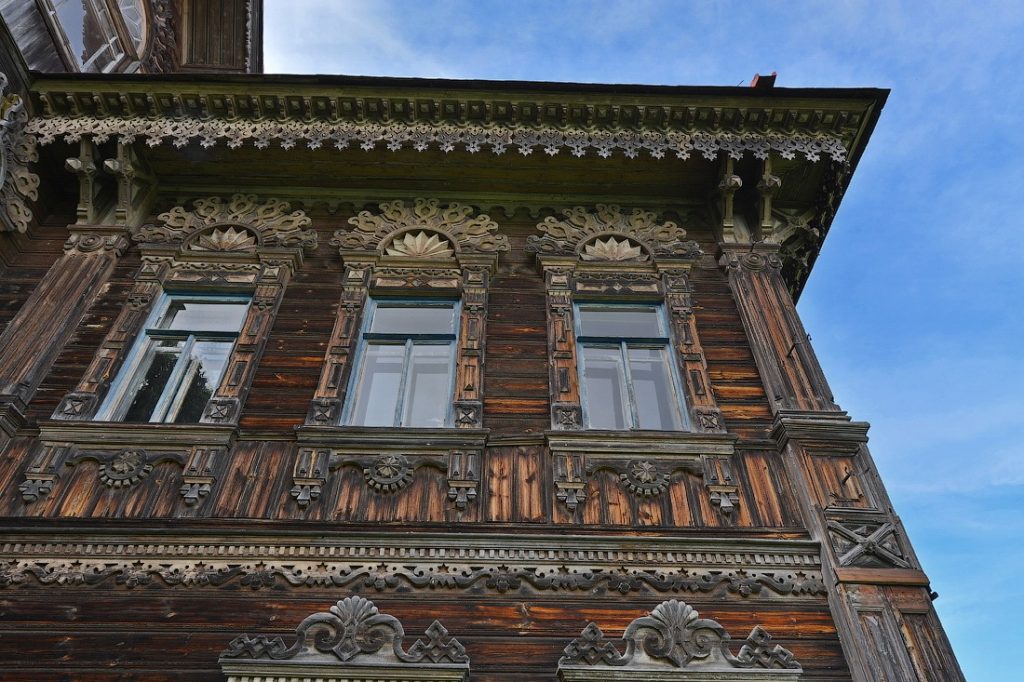
#8
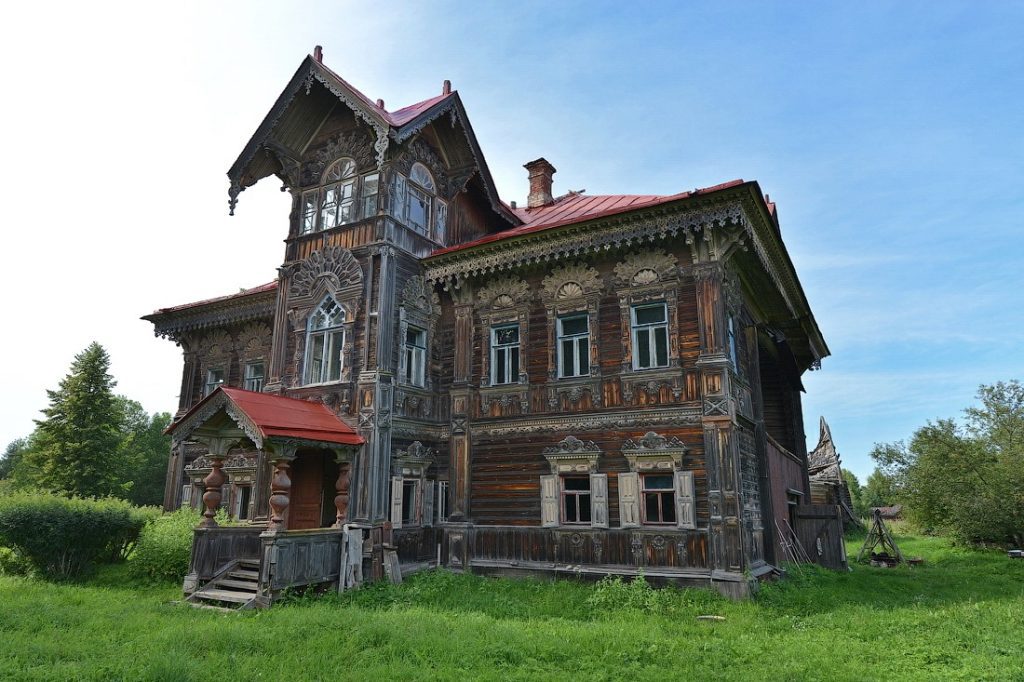
#9
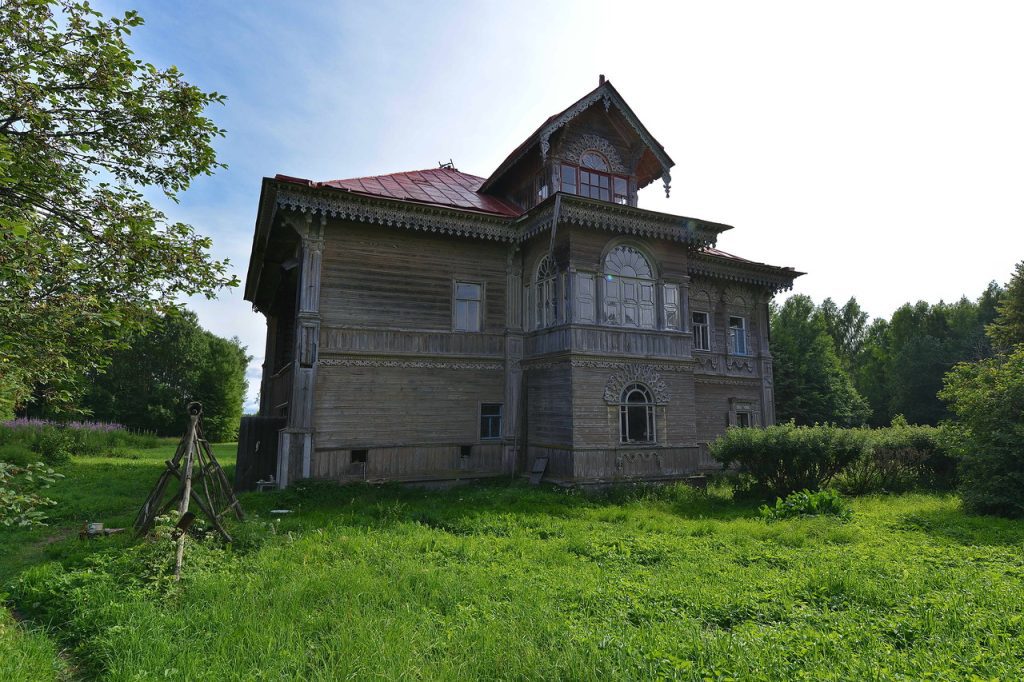
#10
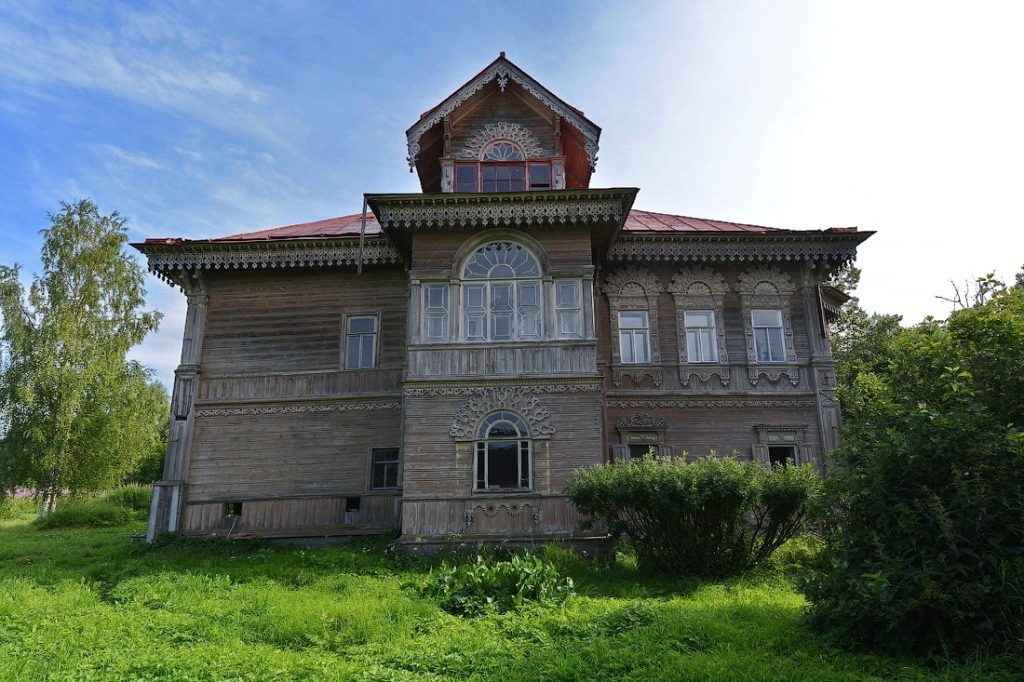
#11
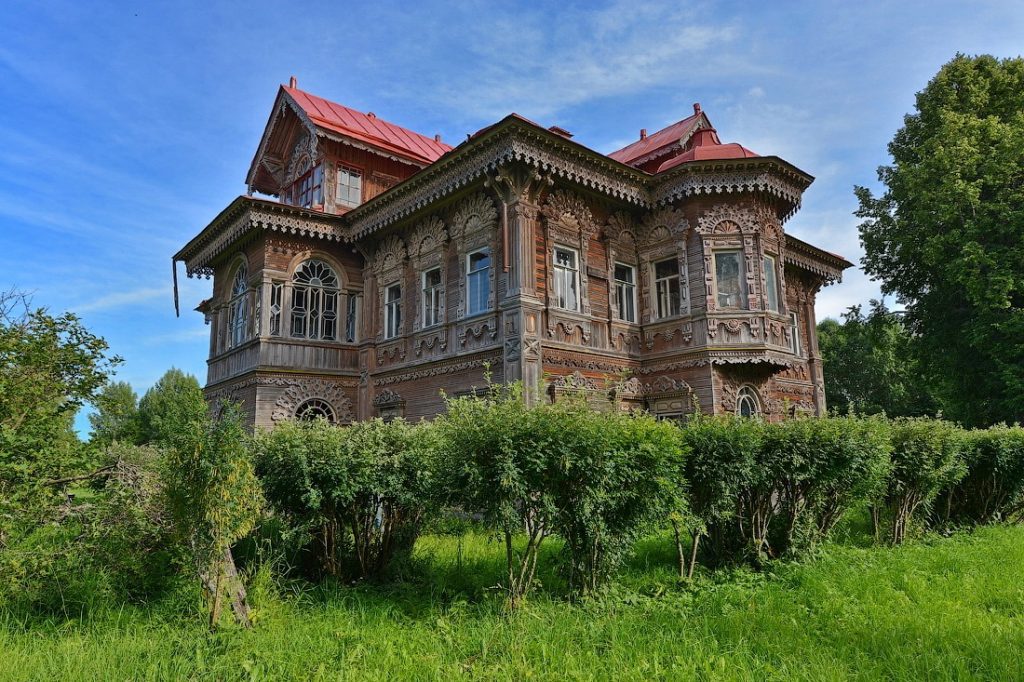
#12

#13
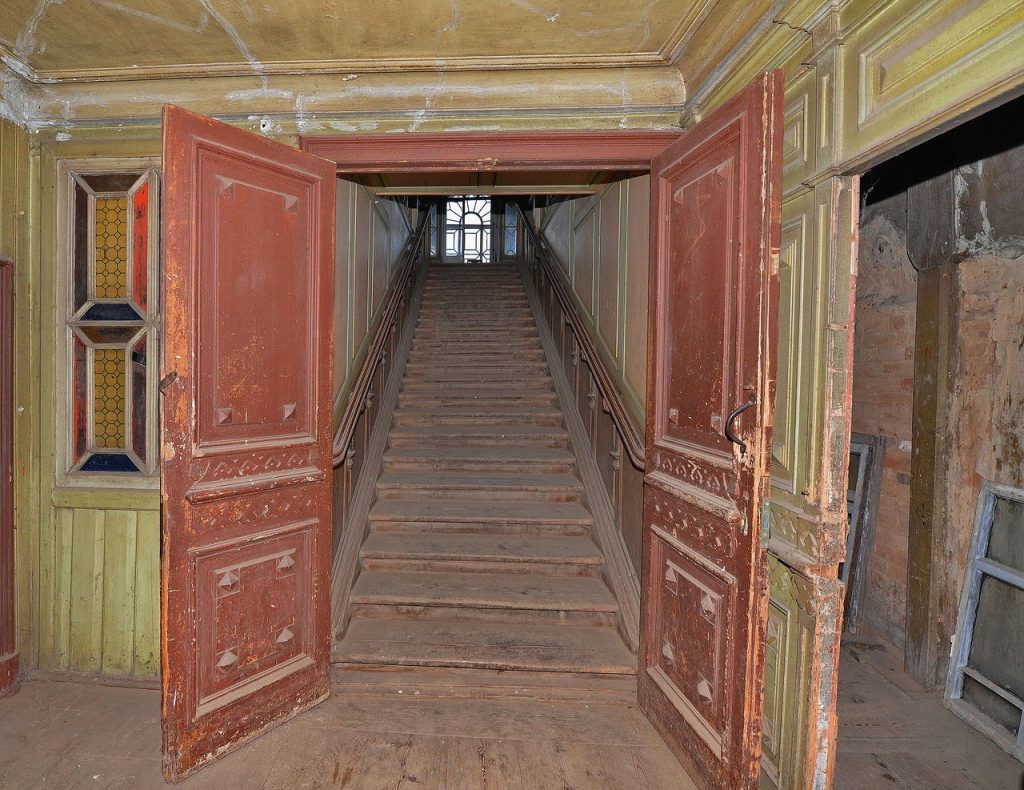
#14
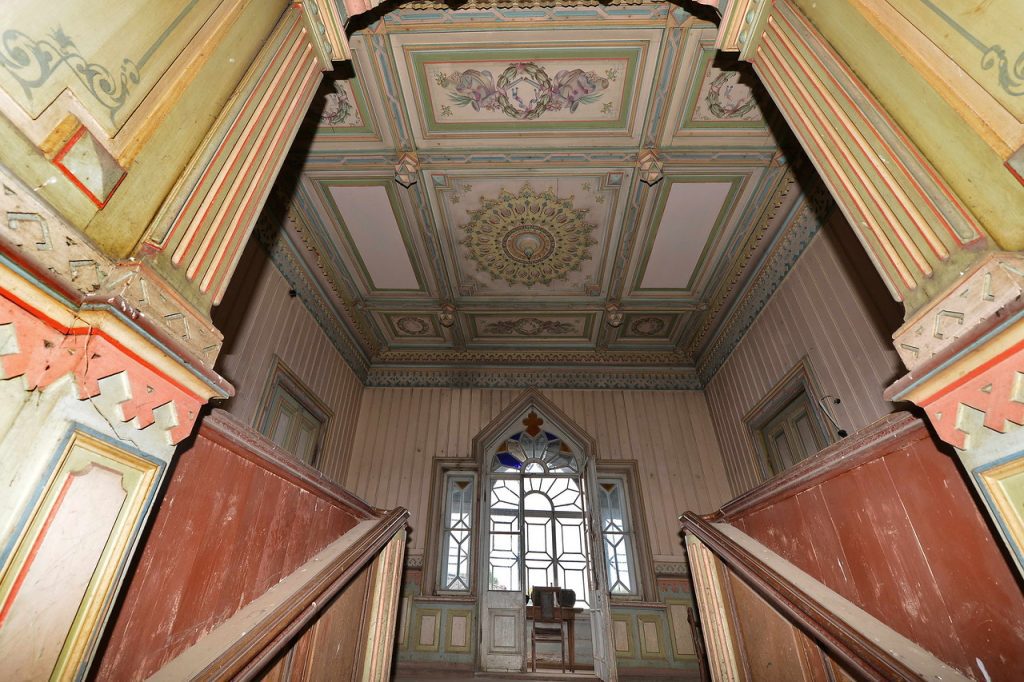
#15
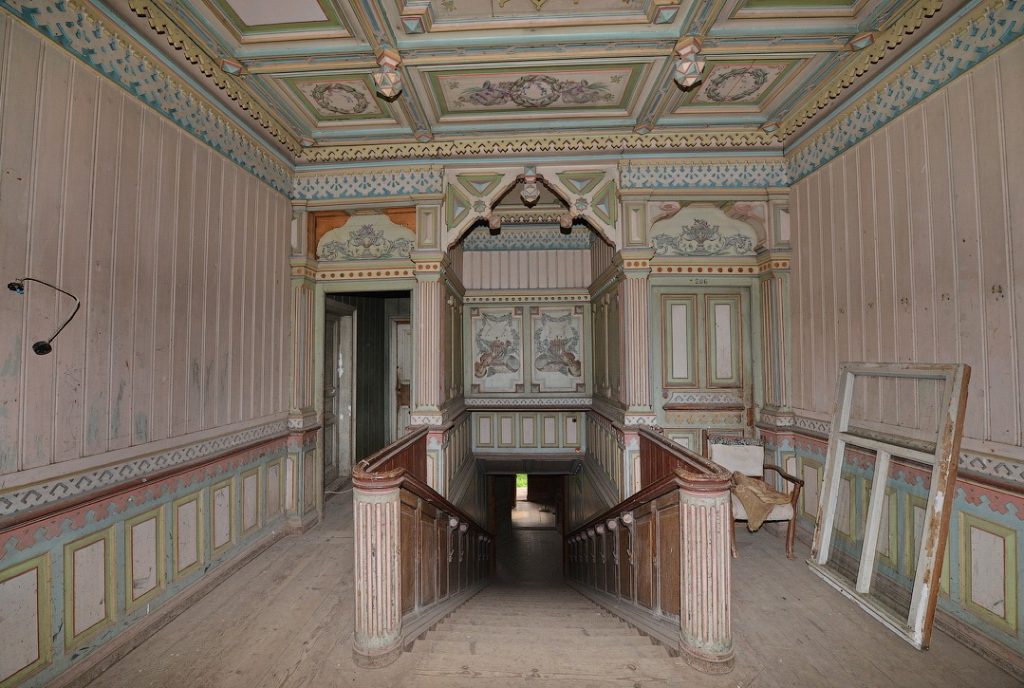
#16

#17

Image by deni.spiri.
#18
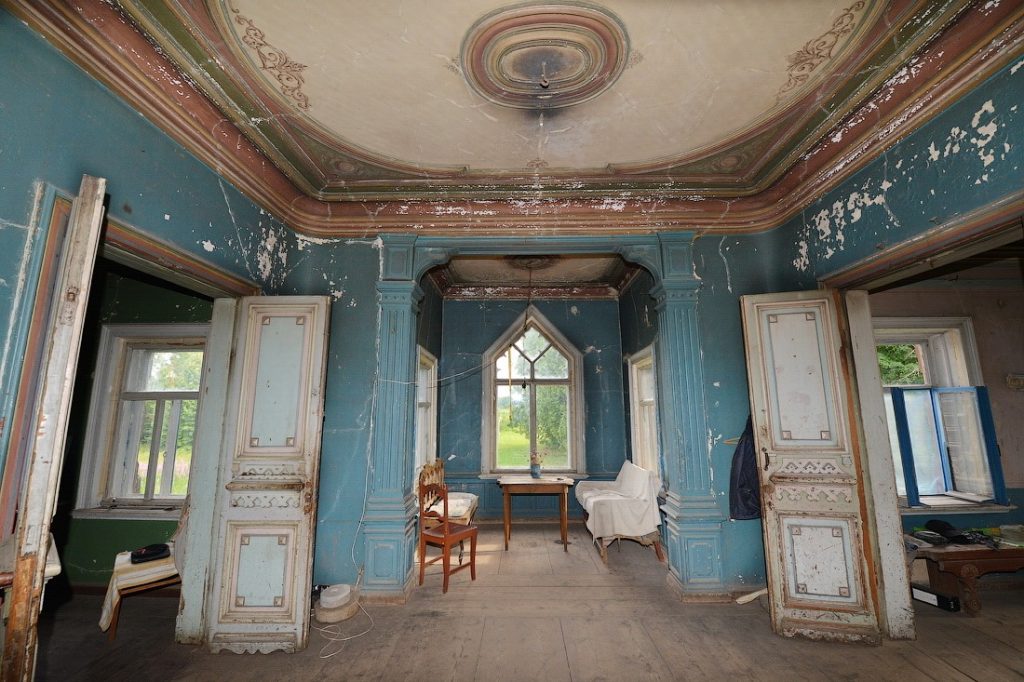
#19
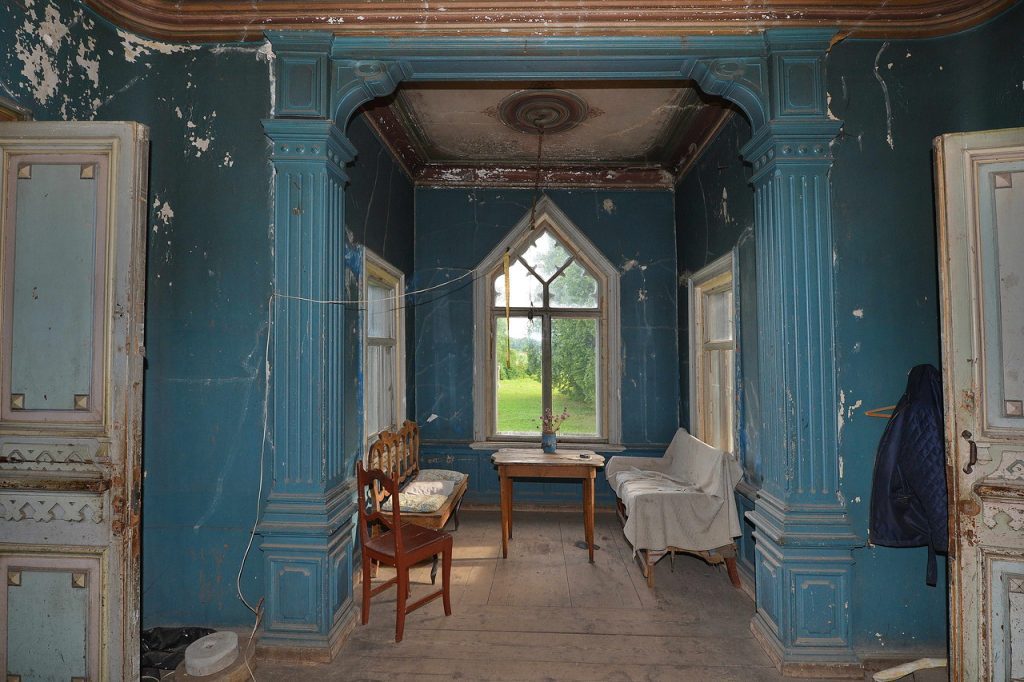
#20

#21
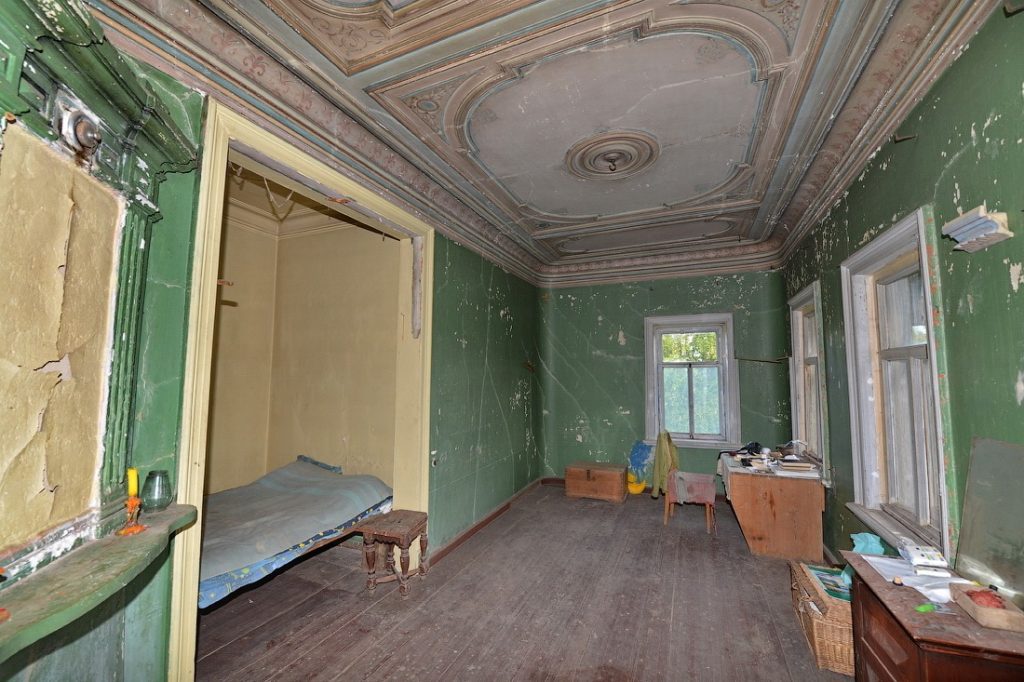
#22
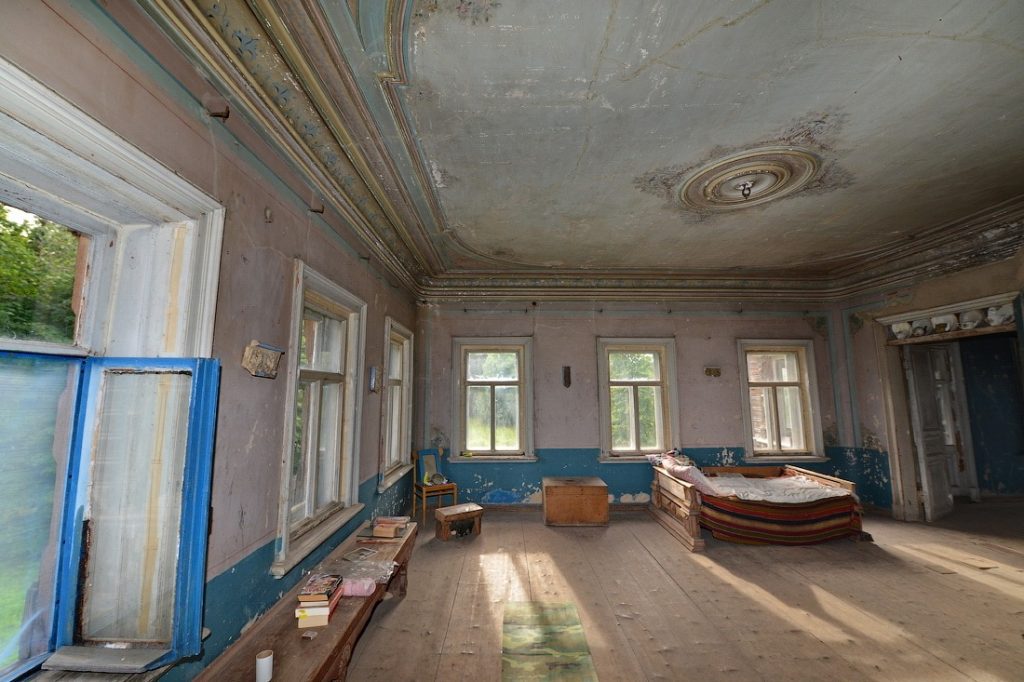
#23
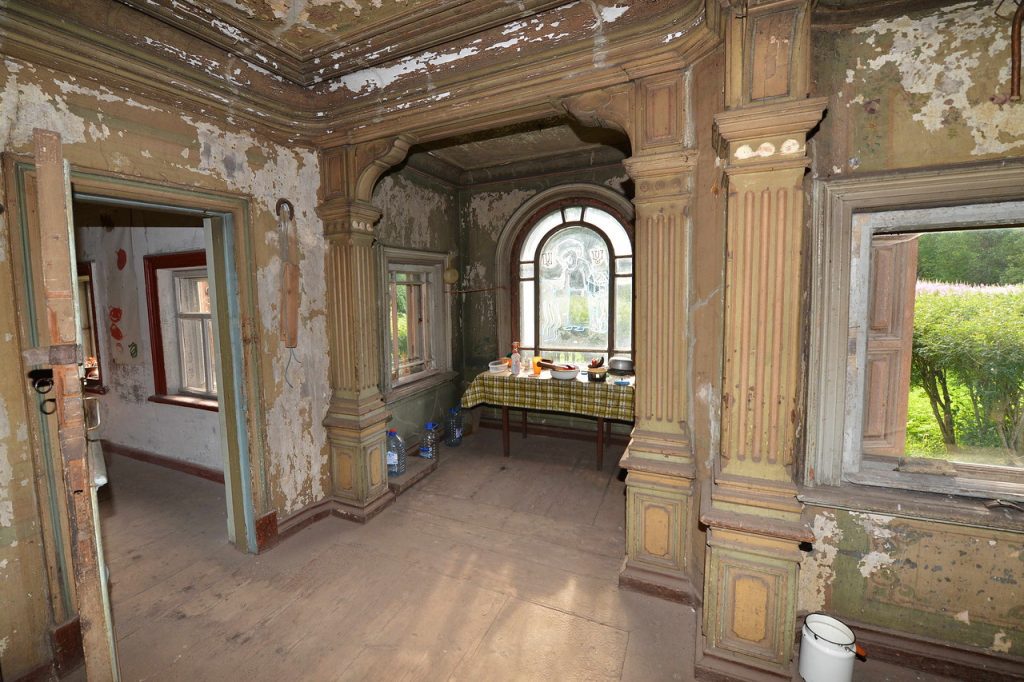
#24
